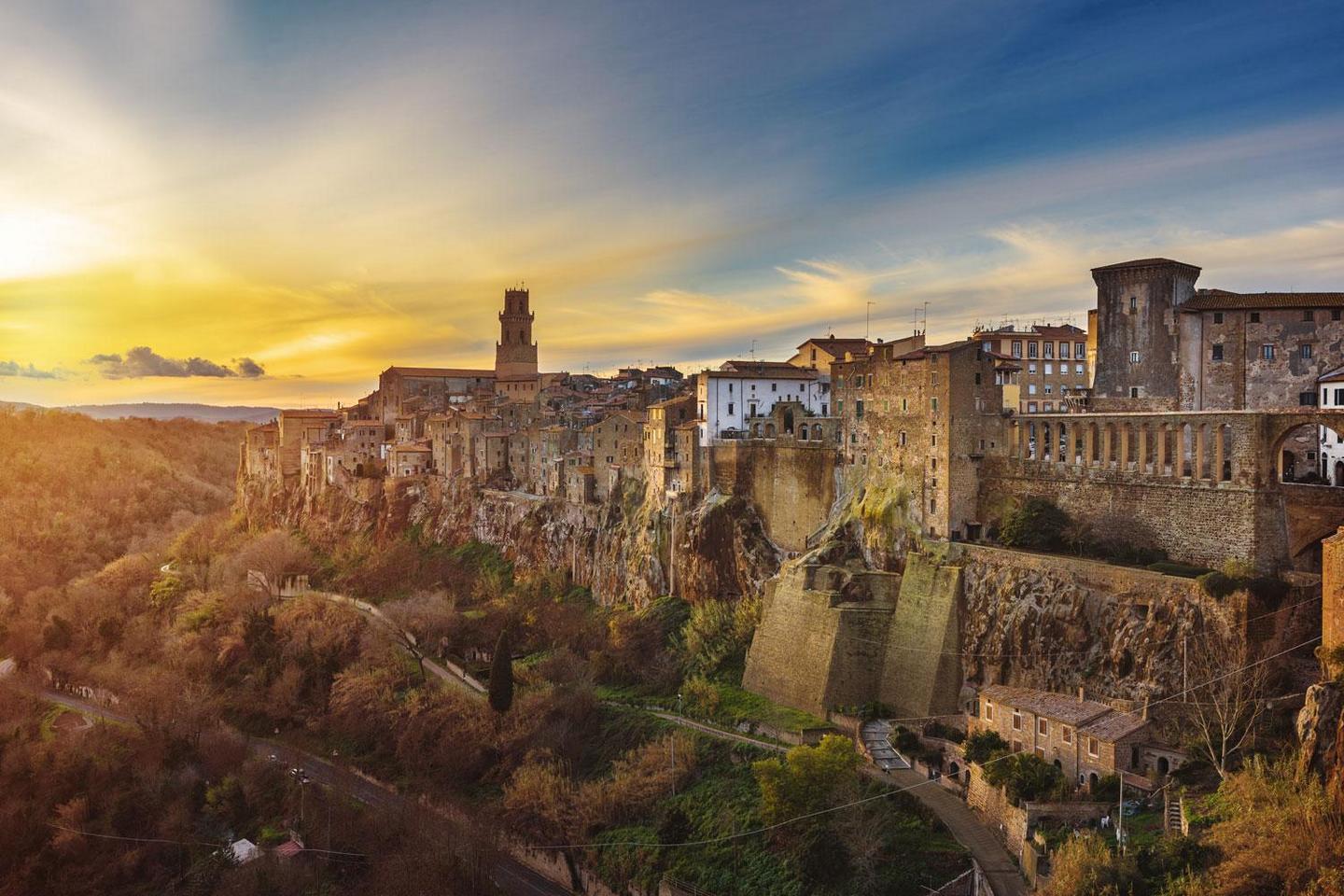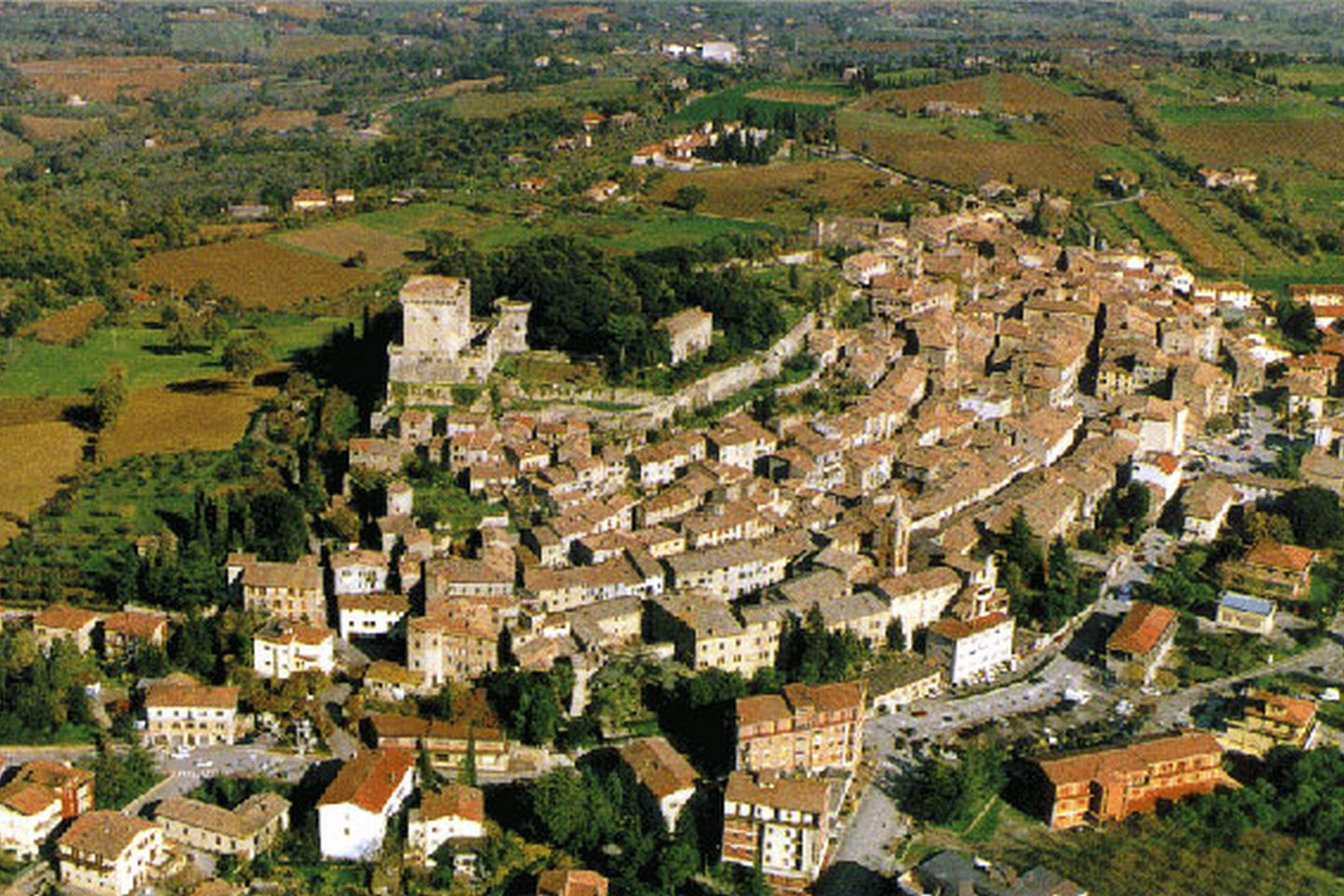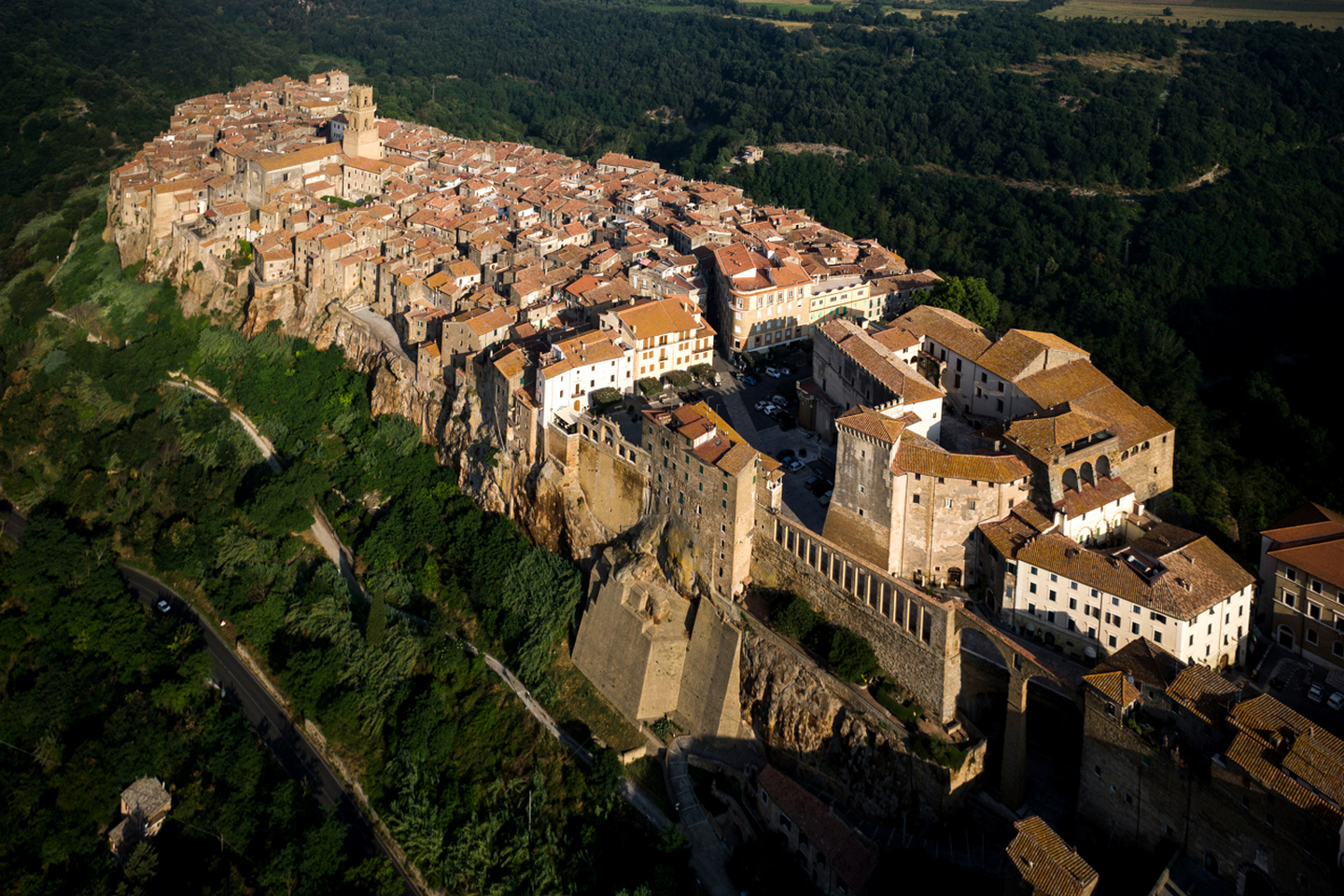Sarteano and Pitigliano
Sarteano lies in the heart of the Etruscan sites of South Tuscany. It was a pre-Etruscan and then Roman settlement that became a wealthy medieval town afterwards. Today it still boasts a 10th century castle, the beautiful church of San Francesco and many more palaces and churches worth while a visit. Of special interest are also the archaeological Etruscan sites.
Pitigliano is certainly the most famous of the Etruscan cities, besides Sarano and Sovana. When you see Pitigliano for the first time, it is like turning the pages of a book of fairy tales out of the Middle Ages. The town stands on an abrupt tufa rock high above the Olpeta, the Fiora and the Lente rivers. Pitigliano is home to a series of artificial cuts into the tufa rock to varying depths ranging from less than one meter to over 10 meters. At the bottom of these cuts are carved channels, apparently for water, although some take the form of steps. The purpose of the cuts is not known: the three main theories are that they were roads, quarries, or water conveyance schemes.
Pitigliano is often called “La Piccola Gerusalemme” (Little Jerusalem) because of its ancient medieval landscape that remembers Jerusalem and the wisdom of the Jewish community, that once brought many cultural and social advances (including the Jewish University of Pitigliano), to the area.



